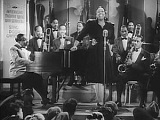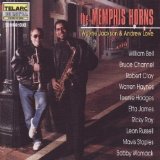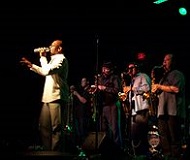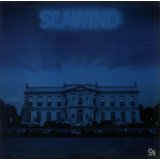 So, meanwhile, I’m still thinking…..I’d spent a chunk of the last week reporting on the Leek Blues and Americana Festival and with the book coming out and everything, I was feeling a bit knackered so a bit of a break in Norfolk seemed just the very thing before covering Creedence Clearwater Revival’s original main man John Fogerty and The Steve Miller Band amongst others for MusicRiot.
So, meanwhile, I’m still thinking…..I’d spent a chunk of the last week reporting on the Leek Blues and Americana Festival and with the book coming out and everything, I was feeling a bit knackered so a bit of a break in Norfolk seemed just the very thing before covering Creedence Clearwater Revival’s original main man John Fogerty and The Steve Miller Band amongst others for MusicRiot.
The North Norfolk coast is a very quiet part of the country, though, and something interesting on a Saturday night isn’t normally part of the masterplan and to be honest, I really wasn’t looking for anything which would lead me to flex the writing muscles.
All I want is Easy Action, Baby.
So when we discovered T. Rextasy was playing, literally, an ‘end of the pier’ show in Cromer Pier Theatre that very evening, we couldn’t resist very late seats in what was an ostensibly sold-out house.
However.
It is the best part of twenty years since I interviewed main man Danielz on Newark FM, when he was playing the festival in front of the splendid castle there; how has he managed to carry the live legacy of Bolan through to Now?
Because way, way back then, he was already regarded as having transcended the medium of ‘tribute’ acts. And since then, there has been a positive tsunami of these, some of which play your local pub on ‘band’ night on a wet Wednesday on the strength of the front man bearing a slight resemblance to whoever of whatever, some of whom work at it, get professional representation and marketing behind them, and find themselves treading the boards alongside the Last Men and Women Standing in provincial theatres or as part of ‘jukebox musicals’; the ‘whoever’ story, insert name here. In some cases the ‘originals’ are still alive, and in some cases still turn out for the occasional tour, which makes it all a question of scale, affordability and access. Very strange.
No such problems with Marc Bolan’s legacy. It was all over for the poor bloke by the end of 1977; and he’d been drifting, well off the pace, for a number of years before that. He’d been ‘rumbled’ by then, the ‘cosmic boogie’ card had been heavily played, and he was busily trying to find a way forward in the face of punk, the stellar progress of his old mate Bowie, and the debilitating effects of long-term enthusiasm for the Peruvian Marching Powder.
And during his life, he really didn’t ‘tour’ extensively. After the rash of festivals played with the folksy, Tolkienesque Tyrannosaurus Rex, many of his ‘live’ performances were glammed-up set pieces on Top Of The Pops and the such like. So, it isn’t ridiculous to suggest he really didn’t understand, appreciate or value the power of his songs as live show-stoppers.
Danielz, however, in the years between when I interviewed him for radio (and he’d already been doing this for a while before then) and now, has had more than twice as long as Bolan had to ‘grow into’ the T. Rex repertoire. So, it isn’t ridiculous or sacrilegious to suggest that Danielz probably has a greater understanding of how the songs work in a live setting than Marc Bolan ever had.
And it shows. The luxury of time passing also gives him the opportunity to take risks with the songbook as well, as a younger generation of fans along with the ‘old guard’ don’t necessarily know the difference between some of the minor hits and the ‘B’ sides, hence kicking off the set with “Raw Ramp”, an early 70’s B-side. There’s brave, but the band attacks it with plenty of zip and It Works. Indeed, the whole band are a crisp, disciplined and well-drilled unit, which shows all the hallmarks of hard gigging and professional musicianship, which sadly wasn’t a charge which could be laid at Bolan’s door throughout his career. The biggies are saved largely for the second set, and the middle section of the ‘first half’ is given over to a very enjoyable acoustic section which draws in some Bolan rarities; which makes the decision to do an electric boogie-woogie version of ‘Deborah’ seem a slightly strange one.
The first part of the evening’s entertainment is concluded on a high with a spirited dash through “Jeepster” – one of Bolan’s recordings for Fly Records which are generally regarded as his best; and hearing it live again throws all sorts of light onto it as a song; and for all the world the bones of it seem to have country roots. The bass line which underpins it could easily have been part of a ‘Western Swing’ tune from the late 40’s and early 50’s. Bolan gave us plenty of clues to this – and in the live context presented so expertly and affectionately by T. Rextasy, these become clearer and more visible/audible. In “Telegram Sam”, for example he’s a Howlin’ Wolf at the end, and indeed he is. And a cosmic Bo Diddley, John Lee Hooker, insert name here. We Love To Boogie.
I can’t help feeling it was rather sad, watching Bolan, as I did, slowly lose his grip on the cutting edge, whilst desperately trying to hang on to it, seemingly only ending up with badly injured fingers. He desperately and at times embarrassingly tried to embrace punk and the songs from this period show someone who was trying to tap into the energy but had seriously lost his way; which is more the pity given he had already written and recorded a proto-punk anthem in “Solid Gold – Easy Action”, which Danielz and Co thrash through at the speed and urgency it calls for in order for it to work
Predictably and entirely reasonably towards the end of the band’s set, three big shots in “Ride A White Swan”, “Get It On” and for the encore, “Hot Love” and indeed why not? However it is in these more than any other we see the slight ‘morphing’ of these tunes into the live crowd-pleasers they always potentially could have been; for me, the slightly ‘dirty’ guitar sound doesn’t help the first of these as the bright, spangly guitar on it is what makes it stand out; but a rockier and more ‘stadium’ “Get It On” really helps it to live in a more ‘real’ context than a slightly ‘cut and stick’ studio confection; and “Hot Love” gives a whole load of opportunities for a joyful audience singalong which becomes the celebration of a classic body of work it should be. All interspersed with affectionate, cheeky asides to the audience between songs, some of which showing the ‘beyond the call of duty’ respect Danielz enjoyed from members of Bolan’s family and indeed the larger musical family to which we all claim a degree of patronage. If he is to be believed (and having spoken to him I see no reason why he shouldn’t be) in the final years of his life, the only musos of the period Joey Ramone would call were Tony Visconti, Suzi Quatro, Noddy Holder and Danielz. Well, that kind of tells you something in terms of what Danielz has achieved here. What is also interesting for me is to watch Danielz so many years after first clocking his act all those years ago; he really has matured as a performer. He knows how to ‘work’ a crowd alright. Most of the members of the audience were out of their seats for more than half the set and with an audience largely of mature years, that, in itself, is not easy. And meanwhile, I’m still thinking; I wonder if Bolan would have managed the same given the same longevity? Because one thing you can say with absolute certainty is Danielz is a grafter; this act needs work; it needs to be rehearsed, over and over and over, especially in order to develop the flexibility of ‘oh, ok, we’ll play this now’, which the band does seemingly effortlessly. Which takes a lot of effort. Would Bolan have put this level of effort into ‘being’ Bolan? Conjecture.
So, have I ‘lost the plot’ reviewing a tribute act? Or has Danielz, along with the rest of T. Rextasy, escaped from ‘Tributeland’ and become part entertainer, part curator, part terrestrial interpreter for a mercurial talent who won the battle to reap the initial rewards – he drove a Rolls Royce ‘cos it was good for his voice – but wasn’t around long enough to win the war; respect, enormous back catalogue sales and becoming a live draw of preposterous proportions. Would any of this have happened or would he have been playing the equivalent of the end of the pier show?
I suspect the former rather than the latter. But in order to make an informed decision about that, I would strongly advise an evening or a bit a festy in the company of T. Rextasy. And I’m unlikely to say that about Fake Prat or whoever, so don’t get used to it. And meanwhile, I’m still thinking….
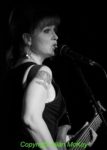 Every time I visit The Half Moon the evening starts out with something a bit surreal. This time it was a Scottish musician at the bar asking for a pint of the weakest bitter they had. And before I get complaints, I’m Scottish and I’m allowed to make those jokes; it’s called self-deprecation apparently. The headliner this time was Lisa Mann from West Virginia via Portland, Oregon on her first UK tour supported by (fairly) new kid on the block Katie Bradley, each offering their own their own particular take on twenty-first century blues and its offshoots.
Every time I visit The Half Moon the evening starts out with something a bit surreal. This time it was a Scottish musician at the bar asking for a pint of the weakest bitter they had. And before I get complaints, I’m Scottish and I’m allowed to make those jokes; it’s called self-deprecation apparently. The headliner this time was Lisa Mann from West Virginia via Portland, Oregon on her first UK tour supported by (fairly) new kid on the block Katie Bradley, each offering their own their own particular take on twenty-first century blues and its offshoots.
Katie’s band kicked off with a statement of intent, a storming version of the Jimmy Reed classic “Baby What You Want Me to Do”. With two lead guitars, one fairly clean and jazzy and the other over-driven and rocky plus Katie’s harmonica, there was plenty of variety throughout the set. Although Katie’s the lead singer, the vocals were shared with the two guitarists as the band ran through a set of slow blues, jazzy blues and funky blues that included the BB King classic “Thrill is Gone” and lovely duet of “Tennessee Whiskey”. Any headline act would be grateful for a support that warmed the audience up as thoroughly as this.
What strikes you immediately as Lisa Mann and the band take the stage is the contrast between the giant Dudley Ross making his Telecasters look like toys and the petite Lisa Mann with a six-string bass slung John Lee Hooker-style over the right shoulder. The band line-up highlighted a slightly different emphasis after the mainly blues-based opening set. The combination of Dudley Ross’s crisp clean guitar and Steve Watts’s keys created a soulful sound more in the vein of Stax than Chess, offering the perfect complement to Lisa’s powerful vocals and melodic basslines.
The ninety-minute set took in blues, funk, soul and even had a jazz-funk interlude to allow Steve Watts a chance to shine, and showcased excellent songs from Lisa’s five albums including “Doghouse”, “Big Long List” and the closer “Hard Times, Bad Decisions”. The playing was spot on throughout, making it easy to forget that the band had very little rehearsal time together before the start of the tour; only the very good ones can do that and make it look so effortless. Let’s hope it’s not too long before Lisa Mann’s back in the UK again.
You can see some photos from the gig here.
Our next contributor plays saxophone with Southside Johnny and The Asbury Jukes but also released a strikingly good album this year as part of the New York Horns which is one of Allan’s albums of the year. When we asked him for a High Fives piece, here’s what he came up with. We think you’ll like this.
5 Horn Sections That Changed My Life
As a saxophone player, one of my absolute favorite ways to make music is with other horn players. Give me a trumpet or two, a couple of other saxophone players and a trombone to add some love, and you’ve got a recipe for a whole lotta fun. If the rhythm section is the meat and potatoes, and the vocalist is dessert, then the horn section is the salt. We bring out all the other flavors and make everything oh so much sweeter.
In thinking about the subject matter for this best-of list, it quickly dawned on me that I had MANY more than five examples that I could draw upon to make my point. So many that I almost gave up! After some careful consideration though, here’s five of the horn sections that have changed my life through their contributions to the music:
THE swingin-est band in the history of jazz. Count Basie’s band emerged in the 1930’s in Kansas City, and became the de facto definition of foot-stomping swing with their penchant for shouting blues, riffing head arrangements, and an infectious groove that just made you want to dance. The jazz traditions of “riffing” and “head arrangements”, while not originating with the Basie band, were certainly developed and forwarded onward by the band. Many of the riffs, licks and phrases that you will hear modern horn sections play can trace some or part of their lineage back to the Basie band. Check out “The Atomic Mr. Basie” (1957) and “Count Basie Swings, Joe Williams Sings” (1956). Two of my all time favorite Basie albums.
James Brown redefined popular music. He also redefined the role of the horn section in popular music. Prior to his influence, horns would generally have a more melodic role – playing melodies and generally being in a “lead” role. The late swing and early jump blues bands often were led by horn players and under the vocals the horns played a large supporting role, remaining a mostly harmonic underpinning. James changed all that. The horn section under James Brown became another rhythmic instrument, driving and propelling the groove. With snapping rhythmic pulses and repeating motifs, the horn section was another texture in the rhythm section, adding propulsion and rhythmic intensity. Check out “Mother Popcorn”, “Super Bad”, “Soul Power” and “Cold Sweat” for classic examples. The JB Horns (Maceo Parker, Fred Wesley, Alfred “Pee Wee” Ellis) also were a fixture of P-Funk and Bootsie’s (Collins) Rubber Band, as the Horny Horns.
Growing up in North Carolina, in the southern United States, it was inevitable that I was exposed to the music coming out of Memphis, Tennessee and especially STAX Records. Wayne Jackson and Andrew Love, aka the Memphis Horns, are one of the most recorded horn sections in history. If you’ve heard “Dock Of The Bay”, “Soul Man”, “Hold On I’m Comin’”, “Suspicious Minds”, “Sweet Caroline”, “Takin’ It To The Streets”, “Let’s Stay Together”, “Born Under A Bad Sign”, “Knock On Wood” (and countless other hits), then you’ve heard the Memphis Horns. They appeared on virtually every STAX recording, backing Otis Redding, Sam & Dave, Eddie Floyd, Carla & Rufus Thomas and an endless list of others. Not only were they a staple of the Memphis scene but could also be found as part of the Muscle Shoals scene, and on recordings with Aretha Franklin and Wilson Pickett.
No modern horn player that plays funk, soul or R&B hasn’t heard of or spent time studying TOP. Bursting onto the scene in Oakland, CA in 1968, Tower saw its peak success from 1973 to 1974. The band continues to tour extensively to this day, playing hundreds of shows every year across the world. The horn section has been featured on countless recordings by artists as diverse as Little Feat, Graham Central Station, The Monkees, Santana, Elton John, John Lee Hooker, Rufus, Rod Stewart, Huey Lewis and the News, and Aerosmith and has come to define a punchy, modern and funky style of writing and performing for horns. Check out “Tower of Power” (1973) and “Back to Oakland” (1974) for the definitive TOP experience.
While not a horn section unto himself, Jerry Hey has probably written more horn arrangements for hit songs and albums than anyone else in the business. As part of the Seawind Horns, Jerry was brought to the attention of Quincy Jones. That relationship led to Jerry’s writing for some of the biggest names in the industry. His credits as an arranger include albums from Michael Jackson, Brothers Johnson, Donna Summer, Rufus, George Benson, Patti Austin, James Ingram, Frank Sinatra, Barbra Streisand, Earth, Wind and Fire , Al Jarreau, Chaka Khan, and the list goes on… Two of my favorite albums that feature Jerry’s writing (and the Jerry Hey Horns) extensively are Al Jarreau’s “Jarreau” and “High Crime” (Check out “Imagination”!) and likely my all time favorite Jerry Hey arrangement (and performance) is from Michael Jackson’s “Workin’ Day And Night” (“Off The Wall”).
I could go on and on… there are so many great horn sections, players and writers out there, making incredible music. Hopefully this list will give you some food for thought and a good place to begin to explore the horn section legacy. Enjoy!


